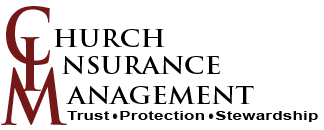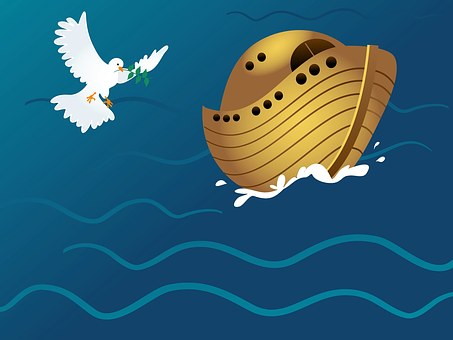The team at Church Insurance Management thanks Emil Hector with Reli-abel Fire Protection for these valuable tips on fire safety and the importance of maintaining working fire extinguishers at your Church. If your safety program needs a review or if your extinguishers need service, give Emil and his team a call at 636-236-4332 or visit them at www.reliabelfire.com.
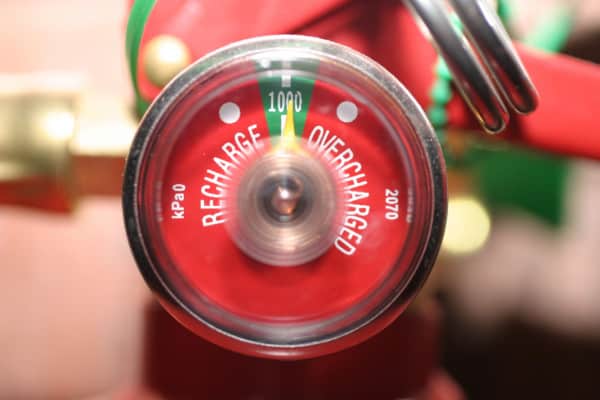
Fire Safety for your Peace of Mind
by Emil Hector, Reli-abel Fire Protection
As a leader within your church organization, you have a legal and ethical responsibility to keep
your employees and congregation safe. Fire safety is one way in which you do this, it helps to give
everyone the peace of mind that you are within legal standards for fire safety laws. If you
own a business, no matter how large or small it may be, you are legally obligated to
understand and follow fire safety laws. However, many church leaders are not aware of fire safety laws to the fullest extent. Learn about the five key things your church should be doing to keep your property, employees, and members safe from fire dangers. At the end of the day we want to make sure the job is done right; you’re left with peace of mind for your family and employees knowing all your extinguishers work in the event of a fire!
Inspecting your Extinguisher
In order to see if an extinguisher is fully charged, you will need to inspect the gauge to make
sure the yellow arrow is pointing in the green. This will indicate the extinguisher has enough
nitrogen to disperse all of the powder to put the fire out! It’s important to flip the extinguisher
upside down to make sure it’s weighed correctly.
Lifespan of your Extinguisher
The lifespan of an extinguisher is 6 years. How can you figure out what year the extinguisher is
built? While flipping the extinguisher upside down to see if it has weight, the date can be found
on the bottom of the cylinder or on the side of the extinguisher on the manufacturer’s label.
According to (NFPA-10) The National Fire Protection Association requires extinguishers to be
torn down 6 years from the inception date of an extinguisher. This is to make sure the cylinder
is sustainable for another 6 years and all of the extinguisher parts are in working order. NFPA-10
also requires extinguishers be hydrotested or replaced 12 years from the inception date. A
hydrotest is a water pressure test that resets the life on an extinguisher. If a cylinder can hold up
to 600 pounds of pressure for 30 seconds or more, this will ensure the extinguisher can run
another 12 year cycle and continue to hold air.
Do NOT replace your extinguisher every year!!
As long as your extinguisher isn’t older than 6 years and is fully charged, there is no need to go
out and buy new extinguishers every year. Extinguishers need to be inspected & tagged on an
annual basis by a licensed company so you are able to keep your occupancy permit and keep
your doors open. An extinguisher tag will tell you the type of extinguisher, the work
done and when it was serviced last. An extinguisher tag will keep you from having to buy new
extinguishers yearly. Every year the color of the tag will change, the color this year is green! If
your extinguisher tag isn’t green, then chances are you are past due or your company hasn’t
come by to inspect the extinguishers in your building.
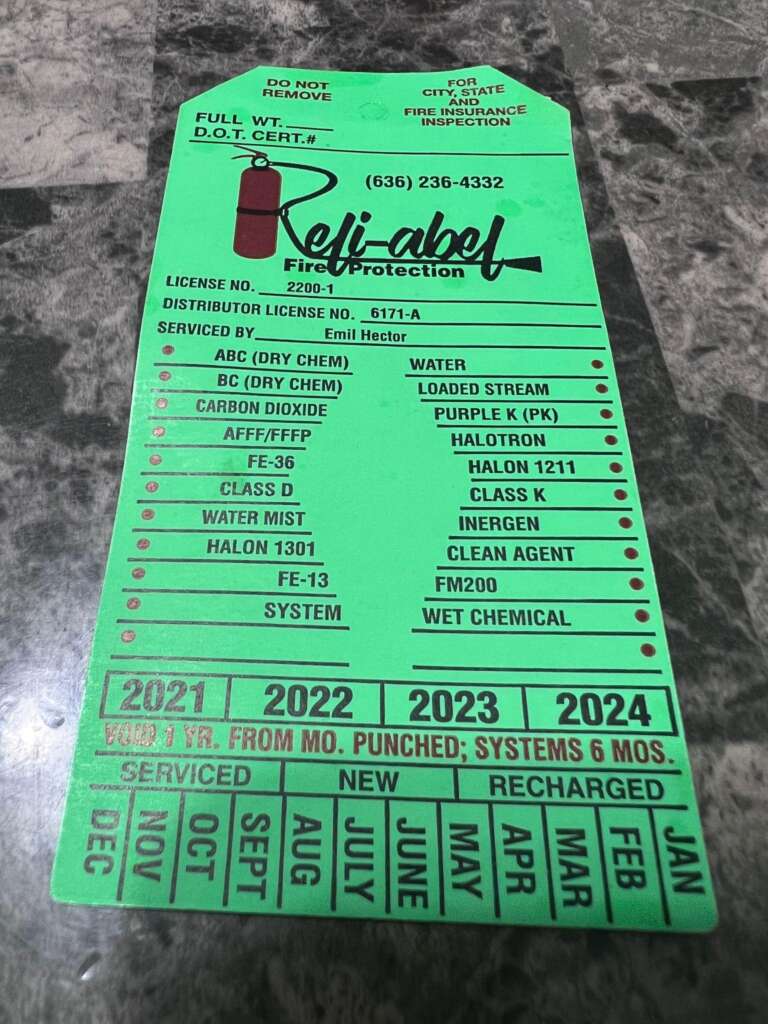
Types of Extinguishers
95% of what you will see in your buildings will be an ABC class type extinguisher. Class A are
fires pertaining to wood, cloth and paper. Class B are any fires related to liquid flammables.
Class C are any electrical fires. All ABC fire extinguishers are filled with monoammonium
phosphate to extinguish any abc class fire. These are usually found in office spaces or in
residential households.
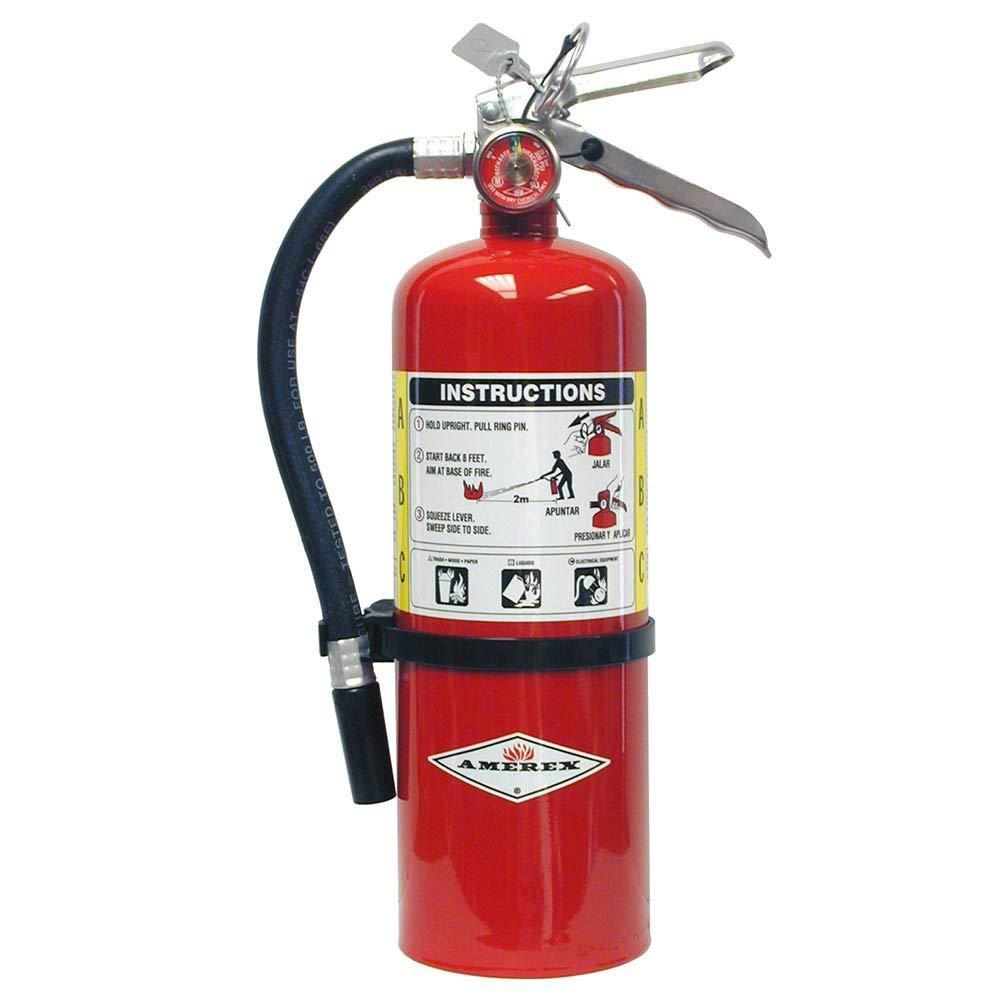
The second class type of extinguishers is a carbon dioxide (CO2) fire extinguisher typically used
for Class B (flammable liquids and gases) and Class C (energized electrical) fires. Carbon
dioxide extinguishers are filled with non-flammable carbon dioxide gas. These are usually found
in server rooms or near electrical equipment. This extinguisher is also known as a cleaning
agent, which will save your electrical equipment and keep it from being covered in powder if you
were to use a class ABC extinguisher.
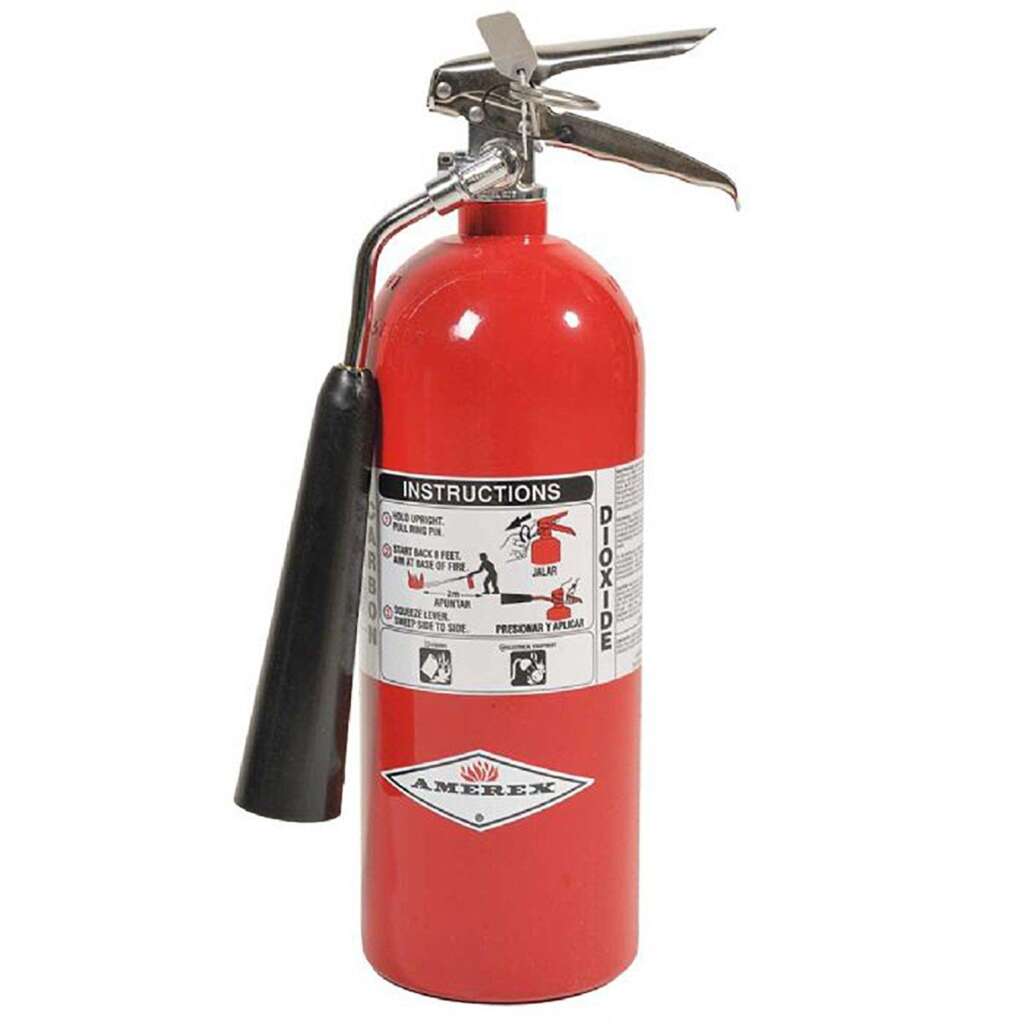
The third class type is the K fire extinguishers. These are more effective in extinguishing cooking
fires. They use wet chemical agents with a greater firefighting and cooling effect for this type of
hazard. These are found in kitchens to extinguish oil hazards where there is a potential for fires
involving combustible cooking media (vegetable or animal oils and fats).

How to stay up to fire code for your building
The fire code says all commercial buildings are required to have a minimum 2A10BC rated fire
extinguisher within 75 feet of all points of the building(s). Stairs may not be used as a path to an
extinguisher. Typically, one 2A10BC extinguisher can serve a maximum 3,000 square foot
area. Extinguishers are to be mounted on a bracket no higher than 5 feet, no lower than 3 feet.
Extinguishers should be mounted next to the exits of your building. They need to be inspected
and tagged by a licensed company to ensure your extinguishers do work and you have up to
date tags in order. Keep everyone safe. Have your extinguishers inspected annually.
